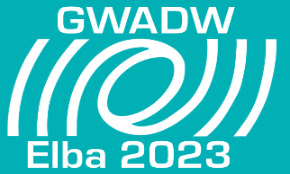Speaker
Description
Future Gravitational wave detectors will be upgraded to silicon optics and suspensions to mitigate thermal noise. Therefore the gravitational wave interferometer will operate at longer wavelengths to reduce optical absorption in silicon. At ANU we are operating a squeezed light system at a wavelength of 1984 nm designed to be suitable for injection into future GW detectors. We produce 11 dB of squeezing however the photodetector quantum efficiency limits the level of measured squeezing to 4 dB below shot noise.
An interesting alternative to high quantum efficiency photodiodes at 1984 nm would be to amplify the signal and vacuum above detector losses to preserve the signal-to-noise ratio. We model the addition of an optical parametric amplifier (OPA) after the squeezer and show realistic gains of 15 that can recover about 98% of the detection losses. The model also indicates this system is relatively insensitive to phase noise as we are looking at the anti-squeezed quadrature. The addition of an OPA at the dark port of a gravitational wave detector may also be compatible with future detector designs. We are currently designing an OPA with a lower threshold and higher nonlinear gain to test the model.

